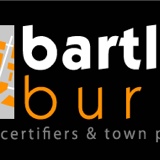Information
-
Audit Title
-
Client / Site
-
Location
-
Prepared by
-
Contact phone number
-
Conducted on
-
Other staff
-
Development Application Number
-
Complying Development Number
-
Construction Certificate Number
Inspection items
-
Access panels, doors and hoppers to fire resisting shafts
-
Access panels, doors and hoppers appropriately tagged
- Yes
- No
- N/A
-
Installation certificate to be submitted to council
-
Notes
-
Automatic fail-safe devices
-
Tested doors operate on activation of fire detection system or fire sprinkler system
- Yes
- No
- N/A
-
Installation certificate to be submitted to council
-
Notes
-
Automatic fire detection and alarm systems
-
Tested fire detection system and alarm system
- Yes
- No
- N/A
Automatic alarm and detection systems are located in the following area of the building
-
All sleeping areas
- Yes
- No
- N/A
-
Accessible service tunnels
- Compliant
- Non-compliant
- Not applicable
-
Air-handling systems
-
Concealed spaces
-
Electrical equipment space
- Yes
- No
- N/A
-
Remote fire indicator panels
- Compliant
- Non-compliant
- Not applicable
-
Cupboards
- Yes
- No
- N/A
-
Intermediate horizontal surfaces e.g storage racks
- Yes
- No
- N/A
-
Open grid ceilings
- Compliant
- Non-compliant
- Not applicable
-
Restricted fire service access
- Yes
- No
- N/A
-
Sole occupancy units
- Yes
- No
- N/A
-
Stairwells
- Yes
- No
- N/A
-
Transportable enclosures
- Yes
- No
- N/A
-
Vertical shafts and openings
- Yes
- No
- N/A
-
Detectors space in accordance with 4.1 of as 1670.1-2004
-
Installation certificate to be submitted to council
-
Notes
-
Automatic fire suppression system
-
System is charged
- Yes
- No
- N/A
-
Appropriate water pressure available
- Yes
- No
- N/A
-
Correct sprinkler head globe provided
- Yes
- No
- N/A
-
Sprinkler system monitored
- Yes
- No
- N/A
-
External mounted water motor alarm
- Yes
- No
- N/A
-
Correct sprinkler spacing
- Compliant
- Non-compliant
- Not applicable
-
Sprinkler water supply locked open
- Yes
- No
- N/A
-
Internal combustion pump set installed correctly
- Yes
- No
- N/A
-
Electric pump set installed correctly
- Yes
- No
- N/A
-
Fire brigade booster connection installed and adequately fire protected
- Yes
- No
- N/A
-
On site water supply tanks installed correctly
- Yes
- No
- N/A
-
Control assemblies installed correctly
- Yes
- No
- N/A
-
Control assemblies installed correctly
- Yes
- No
- N/A
-
Water supply connection to other services
- Yes
- No
- N/A
-
Installation certificate to be submitted to council
-
Notes
-
Emergency lift
-
Stretcher facility is provided in one lift car or provision for a stretcher in at least one car if an emergency lift is not required (building with effective height of over 12m)
- Yes
- No
- N/A
-
Stretcher facility is able to accommodate a raised stretcher with a patient lying on it horizontally by providing a clear space not less than 600mm wide x 2000mm long x 1400mm high above the floor level
- Yes
- No
- N/A
-
Warning sign to be provided and readily seen near every call button for a passenger lift or group of lifts throat the building (except for small transport lifts and dumb waiters)
- Yes
- No
- N/A
-
Repeater panel located at designated building entry point in the case of the fire indicator panel being located in a remote area
- Yes
- No
- N/A
-
Waning sign has the following dimensions
- Yes
- No
- N/A
-
"DO NOT USE LIFTS IF THERE IS A FIRE" 10mm in height, or
-
"Do not use lifts in case of fire" 8mm in height
Emergency lifts in building with an effective height of more than 25m or class 9a building that does not have direct egress to a road or open space
-
Minimum emergency lift dimensions
- Yes
- No
- N/A
-
Minimum depth of car 2280mm
-
Minimum width of car 1600mm
-
Minimum floor to ceiling height 2300mm
-
Minimum door height 2100mm
-
Minimum door width 1300mm
-
Warden intercom points are permanently fixed position if required
- Yes
- No
- N/A
-
Installation certificate to be submitted to council
-
Notes
-
Emergency lighting
Class 5,6,7,8 and 9 buildings
-
Emergency lighting installed in every fire isolated stairway, fire isolated passageway and/or fire isolated ramp
- Yes
- No
- N/A
-
Emergency lighting installed in every floor of a class 5,6,7,8 where the storey has a floor are greater than 300m2
- Yes
- No
- N/A
-
Emergency lighting installed in any room having a floor area more than 300m2
- Yes
- No
- N/A
-
Emergency lighting installed in every passage way, corridor, hallway, or the like that is in the path of travel to an exit
- Yes
- No
- N/A
-
Emergency lighting installed in every room having a floor area more than 100m2 that does not open to a corridor or open space that has emergency lighting or to a road or open space.
- Yes
- No
- N/A
Class 2,3 and 4 buildings
-
Emergency lighting installed in every passageway, corridor, hallway, or the like having a length of more than 6m from the entrance doorway of any sole occupancy unit in a class 2, 3 building or class 4 part of a building to the nearest doorway opening directly to -
- Yes
- No
- N/A
-
A fire isolated stairway, fire isolated passageway, or fire isolated ramp
-
An external stairway serving instead of a fire isolated stairway under clause D1.8
-
An external balcony leading to a fire isolated stairway, fire isolated passageway or fire isolated ramp
-
A road or open space
-
Notes
-
Emergency lighting installed in every passageway, corridor, hallway, or the like having a length of more than 6m from the entrance doorway of any sole occupancy unit in a class 2, 3 building or class 4 part of a building to the nearest doorway opening directly to -
- Yes
- No
- N/A
Sole occupancy units in class 5,6 or 9 buildings
-
Emergency lighting installed in every sole occupancy unit within a class 5,6 or 9 building if-
- Yes
- No
- N/A
-
The floor area of the unit is more than 300m2, and
-
An exit from the unit does not open to a road or open space or to an external stairway, passageway, balcony or ramp, leading to a road or open space
-
Notes
Rooms or space to which public has access to in class 6 or 9
-
Emergancey lighting installed in every room or space to which there is public access in every storey in a class 6 or 9b building if -
- Yes
- No
- N/A
-
The floor area in that storey is more than 300m2, or
-
Any point on the floor of that storey is more than 20m from the nearest doorway leading directly to a stairway, ramp, passageway, road or open space, or
-
The floor area in that storey is more than 300m2, or
-
Egress from that storey involves a vertical rise within the building of more than 1.5m, or any vertical rise if the storey concerned shoes not admit sufficient light, or
-
The storey provides a path of travel from any other storey required by the above to have emergency lighting
-
Notes
Emergency lighting in class 9a health care building
-
Emergency lighting installed in every passageway, corridor, hallway or the like, serving a treatment area or ward area, ans
- Yes
- No
- N/A
-
Emergency lighting installed in every room having a floor area of more than 120m2 in a patient care area
- Yes
- No
- N/A
Class 9c added care facilities
-
Emergency lighting installed in the added care building excluding sole occupancy units
- Yes
- No
- N/A
Fire control centre
-
Emergency lighting installed in the fire control centre
- Yes
- No
- N/A
-
Installation certificate to be submitted to council
-
Notes
-
Emergency warning and inter communication system
-
fire indicator panel is readily accessible and visible within the designated building entry
- Yes
- No
- N/A
-
fire indicator panel is functioning with back to base monitoring
- Yes
- No
- N/A
-
Covering door located in front of fire indicator panel marked "FIRE PANEL"
- Compliant
- Non-compliant
- Not applicable
-
Repeater panel located at designated building entry point in the case of the fire indicator panel being located in a remote area
- Yes
- No
- N/A
-
Clearance of fire indicator panel
- Yes
- No
- N/A
-
600mm clearance from either side of the panel
-
1000mm clearance in front of panel
-
1000mm radial clearance from hinge of door/s
-
Zone block plan provided
- Yes
- No
- N/A
-
Strobe light provided for external indication with word "FIRE" marked adjacent to it
- Yes
- No
- N/A
-
Warden intercom points are located
- Yes
- No
- N/A
-
On each floor as determined by the emergency control organisation
-
At the designated building entry point
-
In each zone, if each floor I'd divided into two or more emergency zones
-
In each designated emergency lift
-
If required by the NSW fire and rescue, in or adjacent to pump rooms, sprinkler valve rooms and hydrant relay booster pump sets
-
Adjacent to the fire indicator panel
-
Warden intercom points are permanently fixed position
- Yes
- No
- N/A
-
Documentation and log available
- Yes
- No
- N/A
-
Commission and test carried out
-
Installation certificate to be submitted to council
-
Notes
-
Warden intercom points are positioned no less than 1200mm and not more than 1800mm above finished floor level
- Yes
- No
- N/A
-
Warden intercom points are located
- Yes
- No
- N/A
-
On each floor as determined by the emergency control organisation
-
At the designated building entry point
-
In each zone, if each floor I'd divided into two or more emergency zones
-
In each designated emergency lift
-
If required by the NSW fire and rescue, in or adjacent to pump rooms, sprinkler valve rooms and hydrant relay booster pump sets
-
Adjacent to the fire indicator panel
-
Emergency exit signs
Provision of exit signs in buildings
-
All exit signs a clearly visible to persons approaching the exit
- Yes
- No
- N/A
-
All exit signs are operation able and comply with AS 2293.1
- Yes
- No
- N/A
-
All exit signs are installed on, above or adjacent to each door providing direct egress from a storey to an enclosed stairway, passageway or ramp serving as a required exit
- Yes
- No
- N/A
-
All exit signs are installed on, above or adjacent to each door providing direct egress from a storey to an external stairway, passageway or ramp serving as a required exit
- Yes
- No
- N/A
-
All exit signs are installed on, above or adjacent to each door providing direct egress from a storey to an external access balcony leading or a required exit
- Yes
- No
- N/A
-
All exit signs are installed on, above or adjacent to each door from an enclosed stairway, passageway, or ramp at every level of discharge to a road or open space
- Yes
- No
- N/A
-
All exit signs are installed on, above or adjacent to each horizontal exit
- Yes
- No
- N/A
-
Exit signs indicating the direction of the required exit are installed in all appropriate positions in corridors, hallways, lobbies and the like should an exit not be readily apparent to persons occupying or visiting the building
- Yes
- No
- N/A
-
A fire isolated stairway, fire isolated passageway, or fire isolated ramp
-
An external stairway serving instead of a fire isolated stairway under clause D1.8
-
An external balcony leading to a fire isolated stairway, fire isolated passageway or fire isolated ramp
-
A road or open space
-
Notes
-
All exit signs are installed on, above or adjacent to a door serving as, or forming part of, a required exit in a storey required to be provided with an emergency lighting
- Yes
- No
- N/A
Direction signs
-
Emergency lighting installed in every passageway, corridor, hallway, or the like having a length of more than 6m from the entrance doorway of any sole occupancy unit in a class 2, 3 building or class 4 part of a building to the nearest doorway opening directly to -
- Yes
- No
- N/A
Exemptions for class 2, 3 and class 4 parts
-
The above does not apply to class 2 buildings in which every door referred to is clearly and legibly labelled on the side remote from the exit or balcony -
- Yes
- No
- N/A
-
With the word "EXIT" in capital letters 25mm high in a colour contrasting with that of the background or
-
By some other suitable method, and
-
An entrance door of a sole occupancy unit in a class 2, 3 building or class 4 part.
- Yes
- No
- N/A
-
Notes
Rooms or space to which public has access to in class 6 or 9
-
Emergancey lighting installed in every room or space to which there is public access in every storey in a class 6 or 9b building if -
- Yes
- No
- N/A
-
The floor area in that storey is more than 300m2, or
-
Any point on the floor of that storey is more than 20m from the nearest doorway leading directly to a stairway, ramp, passageway, road or open space, or
-
The floor area in that storey is more than 300m2, or
-
Egress from that storey involves a vertical rise within the building of more than 1.5m, or any vertical rise if the storey concerned shoes not admit sufficient light, or
-
The storey provides a path of travel from any other storey required by the above to have emergency lighting
-
Notes
Emergency lighting in class 9a health care building
-
Emergency lighting installed in every passageway, corridor, hallway or the like, serving a treatment area or ward area, ans
- Yes
- No
- N/A
-
Emergency lighting installed in every room having a floor area of more than 120m2 in a patient care area
- Yes
- No
- N/A
Class 9c added care facilities
-
Emergency lighting installed in the added care building excluding sole occupancy units
- Yes
- No
- N/A
Fire control centre
-
Emergency lighting installed in the fire control centre
- Yes
- No
- N/A
-
Installation certificate to be submitted to council
-
Notes
-
Site notes
-
Photograph
Required information
-
Required information to be submitted to Council
- Certificate of installation of waterproofing
Inspection result
-
Result of the inspection
- Satisfactory
- Satisfactory - minor woks to be carried out
- Unsatisfactory - reinspection required after rectification works carried out
- Unsatisfactory - works not complete
- Stop all works - contact councils duty planner on 9735 1222, regarding unauthorised works
-
Should you have any enquiries regarding this inspection report please contact Auburn City Council on 9735 1222 or via email council@auburn.nsw.gov.au or in person at the customer service centre located at 1Susan Street, Auburn.











